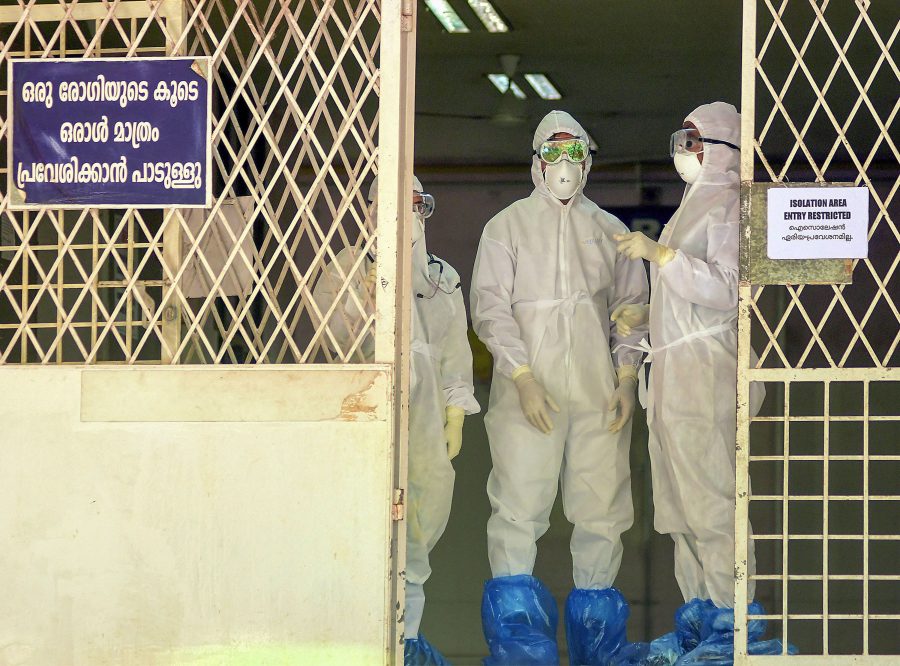
The anatomy of Nipah virus 2.0 — the Kerala battle

The Nipah outbreak a year ago in Kozhikode was pretty scary for Kerala, with 17 deaths attributed to the deadly virus. As we look back at the mishaps that followed, the natural disaster, followed by the man-made one, in retrospect, it was almost as if the virus was the harbinger of bad omen for the people of Kerala.
Today, as the state government tries to play down the fresh outbreak of the virus by categorising it under the multiple labels of nothing to be alarmed about, under control and do not hit the panic button, one cannot blame the public at large for taking these advisories with a pinch of salt. Already, one case has been confirmed in Ernakulam district, and as many as 311 people who came into contact with him have been quarantined. Not without reason, as four who were in close contact with him have started showing symptoms — fever and sore throat.
Damage control mode
Meanwhile, the parallel communication channels have started their dose of scare-mongering as one death attributed to fever in Pathanamthitta district is under fresh microscope seeking signs of acute respiratory distress syndrome (ARDS) and even encephalitis.
The lone case of the 23-year-old youth who has been confirmed by the National Institute of Virology, Pune as NiV positive is said to be recovering, according to the Kochi hospital where he is admitted. Health Minister KK Shailaja said there was no need for anyone to panic as things were pretty much under control. Reflecting the mood of the government, Education Minister AC Moideen said there were no plans to extend the school reopening date, which is now June 6.
While Shailaja reminisced the sterling work done by the state machinery to contain a potential epidemic outbreak in Kozhikode a year ago, Chief Minister Pinarayi Vijayan took recourse to a Facebook post to try and soothe the frayed nerves. True, these reassurances will quell the panic to some extent, but not entirely. Because, the monsoons are just around the corner and with the rains will come a smattering of diseases, mostly water-borne and some of them transmitted by pigs and fowls. As in the past, it cannot be ruled out that some may die of natural causes and a few varieties of fever that inevitably surface during the rains.
Unfortunately, a good number of such deaths would now get attributed to Nipah virus. Result: the onus would be on the government to segregate the genuine cases from the false claims. With a team of doctors from the All-India Institute of Medical Sciences, Delhi getting deployed in the suspected virus outbreak areas, real-time polymerase chain reaction and IgM ELISA tests for NiV could consequently become the norm, sooner or later.
Clearly, the worry lines cannot be wished away as the state has played host to two recent NiV outbreaks in the country in back-to-back years, the first two instances figuring way back in 2001 and 2007 in West Bengal.
Tourism takes a hit
The collateral damage initially would be the fruit market, which could soon be at the receiving end with the public turning reluctant buyers of fruits. The cited reason — there is no sure-fire way of ruling out contact with fruit bats, the documented primary hosts and therefore carriers of the dreaded virus. Not only the exotic fruits, some of them tracing their origin to Malaysia, the original home of the Nipah virus but even the home-grown mangoes, papayas, pineapples and bananas would come under the virus scan. Each and every scratch on the skin of these fruits will now be examined with great suspicion. And many restaurants would be persuaded to take pork off their menu.
The state government would also have to keep a close watch over scores of labour camps in the state where tens of thousands of migrant labour reside in not-so-hygienic conditions. People moving around in public places have already started wearing masks. Manufacturers of such masks will soon be struggling to meet the soaring demand.
The larger economic impact of the virus outbreak, sadly, would be on the hapless tourism sector that is already groaning under the yoke of the miseries the state suffered in 2018. Tourism, by far the single largest industry and hence the biggest revenue source of the state, had barely clawed its way back from the slippery path of a debilitating liquor policy during the 2016-17 season before a string of calamities pulled the rug from under its feet last year.
Some of the major players of the tourism industry would be shuddering at the prospect of possible negative travel advisories by foreign governments. Surely, that is something the state tourism sector can do without, as it is yet to recover from the body blows it took last year – from Nipah, the July floods and then the Sabarimala imbroglio.
The virus outbreak offers a reprieve, too, for the state government. Surely, this will provide the LDF government a chance to forget the drubbing it received in the Lok Sabha elections and get on a war-footing to combat a potential epidemic outbreak.
(Vinod Mathew is a senior journalist based in Kochi.)
(thefederal.com seeks to present views and opinions from all sides of the spectrum. In case of articles by contributors who are not staff of thefederal.com, the information, ideas or opinions in the articles are of the author and do not reflect the views of thefederal.com)


